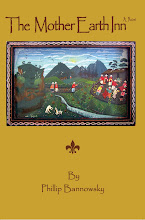I have long held that Steven Leech is Delaware’s pre-eminent person of letters. He is a writer, critic, editor, archivist, journalist, promoter, disk jockey, and investigator of Delaware literary, musical, and visual arts, especially works outside the canonical metropole. This summer (2015), Leech will see a vindication, of sorts, of his life of letters on the periphery through his collaboration with the Delaware Art Museum in Dream Streets: Art in Wilmington 1970–1990, which will run June 27, 2015 through September 27, 2015. Leech edited the lit mag Dreamstreets almost from its founding in 1977 through issue #50 in 2006, and a commemorative Dreamstreets #51 is being published by the museum. Leech will be featured along with Dreamstreets alumni and new talent at a special Dreamstreets Downtown reading at the museum on July 18, 7-8 p.m. An early film by Leech, Having Come and Having Gone, is included in the exhibit.
Steven Leech’s scholarship uncoveres the critical edge of Delaware literature, from works that challenged Delaware’s slave economy to twentieth-century exposés of Chateau Country. Leech explains why he has chosen to take his stand outside the establishment but within Delaware boundaries in The Wedgehorn Manifesto: A Cultural Treatise from the Underground (2008):
It is because I see a cultural presence here that has been driven underground—so far underground that it often doesn’t recognize itself. It is a presence that is the true outgrowth, product and result of its own cultural past. It is a past that I can almost remember, but a huge social and political gash that spans the post world War II era has severed us, until only recently, from that which defines us as a cultural community.
In his Manifesto, Leech rescues Delaware’s artistic legacy from the Memory Hole. He traces the history of Delaware jazz, rock and roll, the African-American press, the counter cultural and alternative press, 19th and 20th century authors, cinema, and visual artists, not only the Brandywine Tradition of Schoonover and Wyeth, but what Leech identifies as the Christina Tradition: Edward Grant, Edward Loper, and William D. White, who was featured recently at the Biggs Museum in Dover, thanks in part to efforts by Steven Leech. In the Manifesto, Leech calls for artists to be caretakers of the community conscience. For a free pdf copy of Wedgehorn Manifesto, email your request to publisher@brokenturtlebooks.com. Soon to be release is a companion piece to the Manifesto, A City of Ghosts.
 Leech carries on a family tradition. His father, Steven Leech senior, was a writer for FDR’s Works Progress Administration and published in the 1938 Delaware: A Guide to the First State. The work was reprinted by the Historical Society of Delaware in 2006, and Leech the son wrote the introduction.
Leech carries on a family tradition. His father, Steven Leech senior, was a writer for FDR’s Works Progress Administration and published in the 1938 Delaware: A Guide to the First State. The work was reprinted by the Historical Society of Delaware in 2006, and Leech the son wrote the introduction.
Steven Leech is founder of Dreamstreets Press, Broken Turtle Books, Broken Turtle Booklist, and the Delaware Rock and Roll Hall of Fame. He has also published numerous personal and whimsical imprints such as Screamweets, Creamtreats, Nemocolin Xpress, and Pinhead. In addition to editing Dreamstreets, Leech was editor of two African American Newspapers in Wilmington, The Delaware Spectator and The Delaware Valley Star, as well as Viewpoint, the public face of the University of Delaware Cosmopolitan Club. He was one of the founders in 1981 of 2nd Saturday Poets, now Delaware’s longest-running poetry venue. Recently Leech founded Dreamstreets Downtown, a reading currently held 3rd Saturdays at 3 p.m. at the Chris White Gallery in the middle of our struggling burg, Wilmington.
Leech is a leading radio personality. Folks in northern Delaware and three contiguous states know Leech through Even Steven’s Boptime, heard on WVUD 91.3-FM Saturday mornings from 6 to 10 p.m. Boptime features popular music, jazz, and show tunes in their cultural, historical, and political contexts. One of the show’s regular features is “Cliffords Corner,” where Larry Williams, Bob Fleming, and Maurice Simms join Leech to tell of personal encounters with luminaries like Betty Roché, Lem and Daisy Winchester, and Clifford Brown. Another feature is "Vietnam Rock," which Leech, a Vietnam veteran, uses as part tribute to the troops and part exposé of that dreadful conflict. Leech also produces Dreamstreets 26, a radio show on WVUD that has captured the voices Delaware poets and writers of the past half-century as well as readings from authors of the last 200 years. The show is currently broadcast Monday’s at 1 p.m. Leech even produced a video of this writer’s poem “String Quartet,” featuring the Delos String Quartet, for WHYY-TV12 in 1986.
Not only has Leech published many hundreds of incisive articles on politics, history, and the arts, but his fiction and poetry are as daring as anything by the predecessors he admires. Works such as Raw Suck, Untime, and 2000 Years are at times dark and painfully personal, sometimes humorous, and always prophetic. He floats his characters in and out of alternative universes, some hellish, some as life was supposed to be. His work is never lukewarm. As the Good Book says, the lukewarm the Lord spits from His mouth.
Steven Leech is the recipient of both Emerging and Established Artist fellowships from the Delaware Division of the Arts. Events associated with the exhibition at the Delaware Art Museum are available at the Museum’s Website.
Most of Steven Leech's literary works are listed on his Broken Turtle Booklist Page. There is also an archive of some of his works and old photos at Flying Snail.










